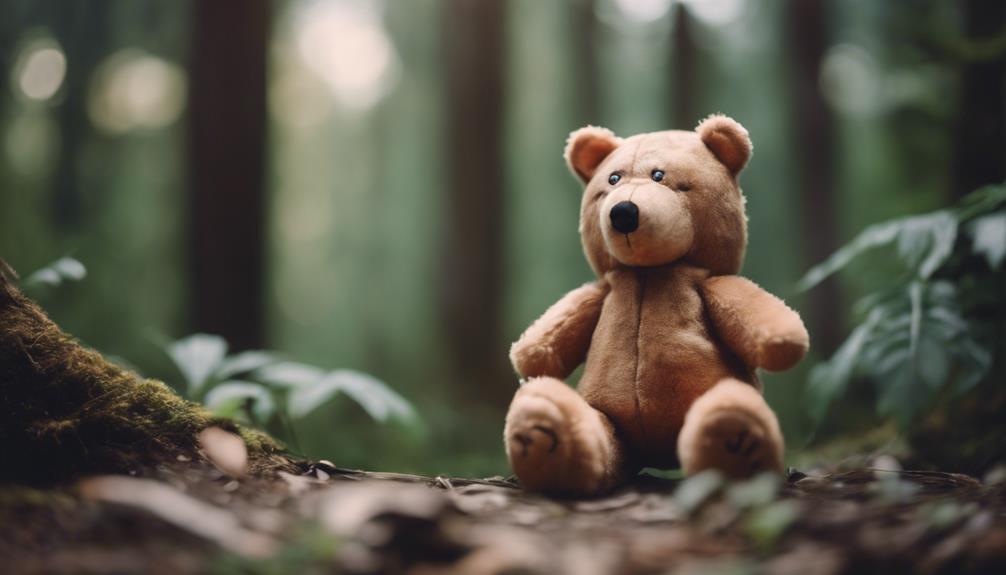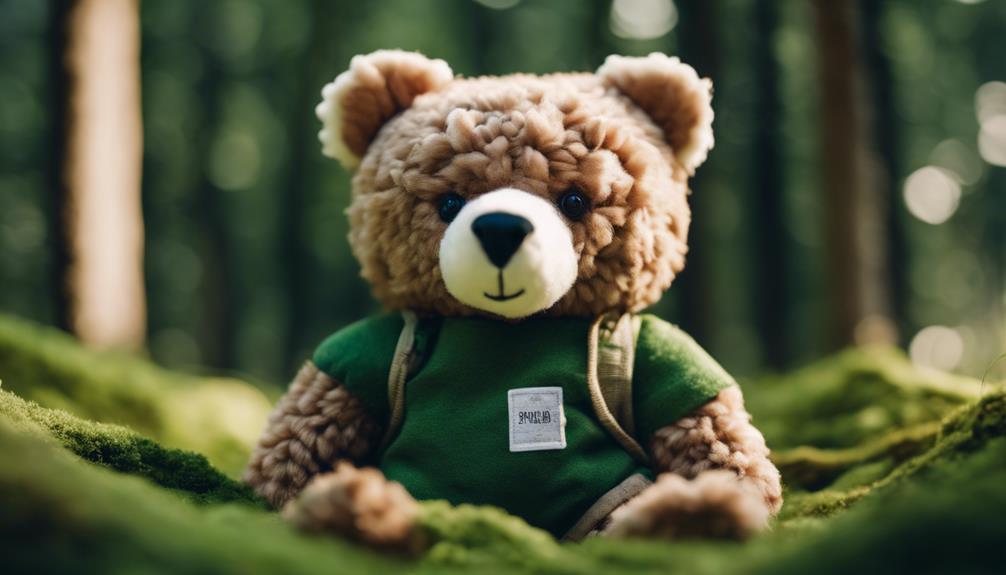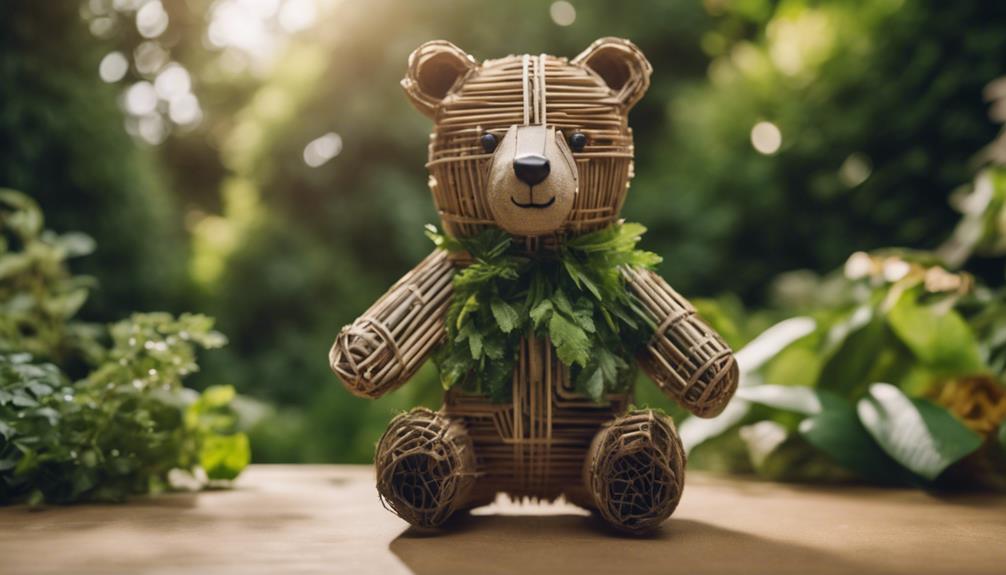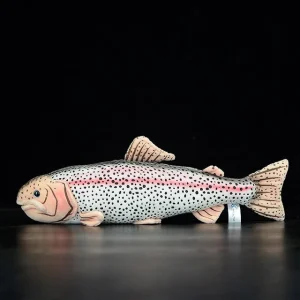Ever wondered about teddy bears that are not just cuddly friends but also eco-friendly champions? Bears for Humanity brings you plush toys that are soft, safe for kids, and kind to the environment. Their dedication to organic materials and charitable work sets them apart in the toy industry. But there’s more to this heartwarming brand that you’re about to uncover!
In this article, we’ll delve into the world of sustainable toys and charitable initiatives with Bears for Humanity. Get ready to discover how you can make a difference while embracing the joy of playtime.
Ready to explore a world where fun meets sustainability? Let’s dive in!
Key Takeaways
- Sources GOTS organic cotton, hemp for antibacterial plushies
- Utilizes eco-friendly packaging with biodegradable materials
- Donates a bear for each purchase, supports charitable causes
- Manufactures with GOTS cotton, plans rural US production shift
Sustainable Sourcing Practices
Bears for Humanity is dedicated to sustainable practices by sourcing GOTS certified organic cotton for their plushies, ensuring eco-friendly manufacturing processes. This commitment to using certified organic cotton not only guarantees top-notch quality but also showcases the brand’s strong emphasis on ethical sourcing and fair labor practices.
Key Fact:
🔍 Did you know that one in five Americans owns an eco-friendly product? Environmental sustainability is gaining popularity, and Bears for Humanity is at the forefront with their organic and ethical products.
Stand-Out Factor:
Why is Bears for Humanity unique? This article uncovers their eco-friendly branding benefits and their contributions to a better world.
Founders’ Vision:
Kristy Ting and Liz Gumbinner, the founders, aimed to provide healthier and more meaningful products. Kristy, with an MBA and experience in IKEA stores, was inspired by Sally’s Bears, a teddy bear repair shop. Their goal: ethically made, high-quality teddy bears.
Company Ethos:
Bears for Humanity stands out with their commitment to environmental protection, offering plush toys made with natural fibers and organic materials. Their focus is on sustainable products that give back to society, reducing waste through recyclable packaging and breaking down materials over time.
Eco-Friendly Packaging Solutions

Discover how eco-friendly packaging solutions elevate Bears for Humanity’s dedication to sustainability and environmental accountability.
By opting for biodegradable bags to package their organic teddy bears, Bears for Humanity not only reduces waste but also lessens their ecological footprint. This strategic choice of sustainable packaging materials underscores the brand’s unwavering commitment to environmental stewardship.
It showcases their ethos of responsibility while bolstering their image as a socially conscious business. Through these initiatives, Bears for Humanity showcases a holistic approach to advancing sustainability and community well-being, offering top-notch, ethically sourced products in packaging that aligns with their values.
Charitable Initiatives and Impact

In a remarkable show of social responsibility, Bears for Humanity weaves charitable initiatives into its very fabric, creating a ripple effect of positive change in communities in need. For every bear purchased, the company graciously donates one to a child in need, actively supporting a range of charitable causes.
Through strategic partnerships with programs like CalWorks, Bears for Humanity not only uplifts at-risk mothers but also provides them with valuable employment opportunities. By teaming up with impactful individuals like Danielle Gletow, the brand is dedicated to transforming lives and ensuring that bears reach those who need them most.
With a resolute focus on social impact, Bears for Humanity stands out for its unwavering commitment to giving back and fostering meaningful change.
The Importance of Eco-Friendly Branding
Shaping a Greener Future: Eco-friendly branding helps businesses navigate the challenges of climate change, contributing positively to the environment.
Core Advantages:
- Customer Loyalty & Employee Engagement: Demonstrating environmental concern attracts and retains customers and boosts employee morale.
- Improved Public Image & Marketing Opportunities: Enhances reputation and opens new marketing avenues.
- Cost Savings: Using recyclable materials can be economically beneficial in the long run.
Conclusion: Embracing eco-friendly branding is not just environmentally responsible but also a strategic business move, balancing sustainability with growth potential.
Related Articles for Further Reading:
- Unpacking Gund Plush Llama Popularity
- Baby Toy Safety Standards & Certifications
- Lil Luvs Series: Baby-Safe Toys
Eco-Friendly Brandi
Commitment to Organic Materials

When it comes to sustainability and top-notch quality, Bears for Humanity takes the lead with their dedication to organic materials. By using GOTS certified organic cotton in their plushies, they ensure that their products are crafted from safe and sustainable materials.
The combination of organic hemp and cotton not only gives the plushies antibacterial properties but also makes them hypoallergenic. By steering clear of synthetic polyester fibers and choosing natural materials, Bears for Humanity champions ethical and eco-friendly practices in their manufacturing process.
These stuffed animals are filled with safe, recycled polyfill material, lessening their impact on the environment. Through the use of organic materials like hemp and cotton, Bears for Humanity promotes sustainable and ethical sourcing practices that support fair living wage jobs in the industry.
Environmental Consciousness in Manufacturing

Bears for Humanity takes a bold step towards environmental consciousness in manufacturing by exclusively using GOTS certified organic cotton for their plushies. This not only showcases their dedication to sustainability but also ensures the safety and comfort of children. By choosing eco-friendly materials, the company not only promotes sustainable practices but also sets a standard for ethical toy production.
In addition to their focus on organic cotton, Bears for Humanity also upholds ethical sourcing practices, including fair labor conditions. This commitment not only benefits the environment but also positively impacts communities involved in the production process. Looking ahead, the company plans to shift production to rural areas in the US, further demonstrating their dedication to responsible sourcing and environmentally conscious manufacturing.
Frequently Asked Questions
What Other Eco-Friendly Brands Exist?
Beyond well-known names like Patagonia and Tesla, a plethora of eco-friendly brands are making waves:
- Bombas Socks: Donates a pair of socks for every purchase.
- Pela Case: Offers biodegradable phone cases.
- Lush Cosmetics: Features ‘naked’ packaging for its products.
How Can Companies Ensure Genuine Eco-Friendly Branding?
For authentic eco-friendly branding:
- Develop an Environmental Policy: Clearly outline sustainability measures.
- Embrace Transparency: Share details on green initiatives.
- Invest in Recyclable Packaging: Opt for sustainable packaging solutions.
- Educate on Product Origin: Inform customers about ethical production methods.
What Are the Long-Term Consequences of Eco-Friendly Branding?
Long-term, eco-friendly branding can:
- Attract Eco-conscious Customers: Cater to a growing market focused on sustainability.
- Enhance Investor Appeal: Showcase foresight and social responsibility.
- Establish Financial Stability: Sustainable practices can lead to long-term economic benefits.
How Do Environmental Regulations Influence Eco-Friendly Branding?
Environmental regulations:
- Set Boundaries: Provide a framework for sustainable practices.
- Encourage Compliance: Push companies to innovate within legal limits.
What Are the Risks of Eco-Friendly Branding?
Risks include:
- Legal Repercussions: For non-compliance or misleading claims.
- Meeting Customer Expectations: Ensuring product reliability and environmental impact.
Are Teddy Bears Environmentally Friendly?
Yes, teddy bears can be environmentally friendly. Choosing bears made from GOTS-certified organic cotton, hemp-cotton blend, and recycled polyfill stuffing supports sustainability. These materials are antibacterial, hypoallergenic, and avoid harming the environment.
What Do Bears Do for the Ecosystem?
Bears enhance ecosystems by regulating prey populations, controlling insects, aiding in seed dispersal, contributing to nutrient cycling, and creating habitats. Their actions support biodiversity and play a crucial role in maintaining a healthy balance in nature.
Conclusion
Bears for Humanity leads the way in eco-friendly branding by prioritizing sustainable practices, charitable initiatives, and organic materials.
With their GOTS-certified organic teddy bears and commitment to environmental consciousness, they stand out as a beacon of ethical toy manufacturing.
Their impact can be likened to a vibrant garden blooming with positivity, where every purchase not only brings joy to a child but also contributes to a greener, more compassionate world.





